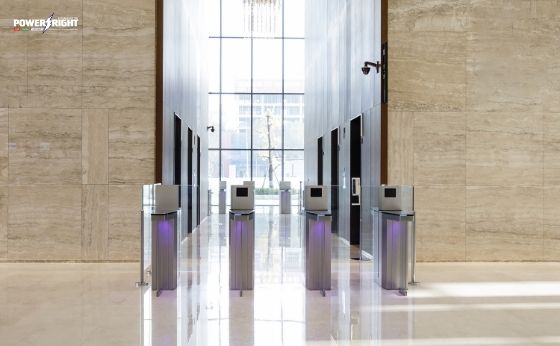
Most of the organizations all over the world have to operate now in completely different environments due to ongoing COVID-19 pandemic. It affected the physical security of every company. Physical threats are rising, putting reputational and financial pressures on security staff and business teams.
Last year the lack of protective intelligence resulted in missed harm and threats to many companies' customers and employees. Thus, every business owner should be looking for decent protective measures to proactively identify and act on threats to avoid numerous irreversible human and business costs. Now is the best time to invest in physical security tools to minimize the unmanaged physical threats and, consequently, the related negative impact.
Although due to COVID-19 restrictions, many of us have stopped commuting to work, there are quite a few employees who have to come to work on a regular basis. Any business needs to guarantee security to this kind of workers.
Moreover, such businesses as banks, grocery stores, pharmacies or large office buildings have to provide safety not only to their staff members but also to a large number of customers walking into the premises every day.
On the other hand, if your business has shifted to remote working, you may still have some security concerns. As most business leaders are focused on their employees’ and customers’ health, cyber attackers and burglars seek to exploit nonstandard operating modes. Hence, an increased rate of burglaries and cyber crimes on the premises, which are left unattended (or much less attended than usual).
Here are some measures and tools worth considering to boost the physical security in the office building:
New health standards may allow a particular number of people staying together in a confined environment. So, it is necessary to keep track of people. Occupancy management can be far more complicated than counting people coming in.
Many facilities used to have a special staff member who clicked each person entering the premises and checked that the temperature of each visitor is within the limit.
Today there are a number of solutions helping with this and even more complex tasks. They will help to avoid any contact between staff members and visitors and, thus, minimize the risk of spreading the virus:
The pandemic has changed the working culture. It shifted from a traditional model of employees interacting and working as a team offline in one place. Nowadays many employees have to work from home, including managers and employers who are trying to find some solutions to track their staff's productivity and ensure overall safety and peace of mind.
CCTV System as A Managing Tool
Covid-19 has significantly increased the demand for CCTV systems to remotely monitor operations and employees in the workplace. Nearly half of all medium and large businesses intend to use their existing CCTV systems this way.
A video surveillance system may help managers to keep an eye on the employees from anywhere anytime. This way they can make sure the staff is working properly and safely while following both directional arrows and face mask compliance and social distancing standards.
Thus, during the pandemic, when most of us have to stay home and minimize travel, video surveillance systems can become a very efficient remote management tool.
Advanced Business Security System
During a pandemic, there are much fewer people staying in the building. Empty buildings are more likely to be a subject of a criminal’s interest. One way to improve business security is by installing a comprehensive business security system.
An advanced commercial system deters criminals, detects flood, smoke and fire, and features video surveillance and intruder alarms. So, it protects your premises and assets in every possible situation.
Remote Monitoring and Guards
All kind of solutions may become useless if nobody monitors the footage and reacts to the system alerts. That is why having a guard on site can still be useful as it enables rapid reaction in case of emergency and ensures less false alarms. Another great option is to have your system remotely monitored by a professional company.
Today’s world looks very different from the world before the pandemic. Regardless of a company budget or size, it is an obligation to ensure new public health standards are being complied with.
Physical security and health needs have changed drastically since the beginning of 2020, forcing businesses to adapt their existing technology or implement new solutions to ensure ‘pandemic-proof’ environment.
This process involves installing contactless access control terminals, automatic doors and barriers, and fever screening cameras. Additionally, businesses tend to use CCTV systems as a management tool to control business processes, safety, face mask and social distance compliance remotely.